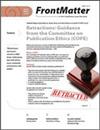Mammals of the Jesús María River Basin, Western Mexico: Alpha and Beta Diversity in an Area of High Environmental Heterogeneity
IF 0.5
4区 环境科学与生态学
Q4 BIODIVERSITY CONSERVATION
引用次数: 0
Abstract
Abstract. The Jesús María River basin in the state of Nayarit, Mexico, is located at the intersection of Nearctic and Neotropical regions in the Sierra Madre Occidental (SMO) in western Mexico. Because of its biological importance, the basin is considered a terrestrial priority region (RTP-059) by CONABIO, the institution responsible for inventorying Mexican biodiversity. Several vegetation types occur in this relatively small area (cloud and tropical forests, conifer forests, subtropical scrub). However, the area has been undersampled because of its difficult access and topographic complexity. Based on our own collections, review of museum specimens, and literature records, we recorded 92 species at 10 major sites throughout the basin. Twenty-three species are endemic to Mexico, 9 of which are endemic to the SMO. Six species were recorded for the first time in the state of Nayarit, and 2 in the state of Jalisco. These findings increased the species count for the SMO of Nayarit by 17 species. Turnover rate was high throughout the region. The number of endemisms of RTP-059 equals or surpasses that of most megadiverse protected areas in Mexico, and this area is likely to be a center of origin for several taxa. No protected areas exist within RTP-059 because its social and natural complexity makes it difficult to establish effective conservation strategies. Resumen. La cuenca del Río Jesús María, en el estado de Nayarit, México, se localiza en la intersección entre las regiones biogeográficas Neártica y Neotropical en la Sierra Madre Occidental (SMO), en el oeste de México. Debido a su importancia biológica, es considerada como región terrestre prioritaria (RTP-059) por CONABIO, la institución encargada del inventario de la biodiversidad en México. Varios tipos de vegetación ocurren en esta área relativamente pequeña (bosques de niebla, bosques tropicales y de coníferas, y matorral subtropical). Sin embargo, el área ha sido poco muestreada debido a su difícil acceso y complejidad topográfica. Con base en nuestras colectas, revisión de ejemplares de museo, y registros bibliográficos, documentamos 92 especies en 10 sitios distribuidos en la cuenca. Veintitrés especies son endémicas de México, de las cuales 9 lo son de la SMO. Se registraron por primera vez para Nayarit 6 especies, así como 2 para el estado de Jalisco. Se incrementó el inventario de mamíferos para la SMO de Nayarit en 17 especies. La tasa de recambio fue alta en toda la cuenca. El número de endemismos para esta región es igual o mayor que el de la mayoría de las áreas protegidas megadiversas en México, y es probablemente el centro de origen de numerosos taxa. No existen áreas protegidas dentro de RTP-059, y su complejidad natural y social hacen difícil la implementación de estrategias efectivas de conservación.墨西哥西部Jesús María河流域的哺乳动物:高环境异质性地区的α和β多样性
摘要墨西哥纳亚里特州的Jesús María河流域位于墨西哥西部西马德雷山脉(Sierra Madre Occidental, SMO)的新北极和新热带地区的交汇处。由于其生物重要性,该盆地被CONABIO认为是陆地优先区域(RTP-059),该机构负责墨西哥生物多样性的清查。在这个相对较小的地区有几种植被类型(云林和热带森林、针叶林、亚热带灌丛)。然而,由于难以进入和地形复杂,该地区的采样不足。根据我们自己的收藏、对博物馆标本的回顾和文献记录,我们在整个盆地的10个主要地点记录了92个物种。23种是墨西哥特有的,其中9种是SMO特有的。纳亚里特州首次记录到6种,哈利斯科州首次记录到2种。这些发现使纳亚里特SMO的物种数量增加了17种。整个地区的离职率都很高。RTP-059特有物种的数量等于或超过了墨西哥大多数巨型多样性保护区的数量,该地区可能是几个分类群的起源中心。由于RTP-059的社会和自然复杂性,很难建立有效的保护策略,因此在RTP-059内不存在保护区。Resumen。国家卫生组织Río Jesús María、国家卫生组织纳亚里特国家卫生组织、国家卫生组织、国家卫生组织intersección、国家卫生组织biogeográficas Neártica、国家卫生组织和国家卫生组织。Debido是非常重要的biológica,我们考虑到土地优先事项(RTP-059),以及CONABIO, la institución生物多样性目录和mmacxico。各种tipos de vegetación发生en esta área relativamente pequeña(热带boques de niebla,热带boques y de coníferas,亚热带自然)。在禁运期间,el área,该sido poco必须通过一个debiddo和su difícil访问complejidad topográfica。Con base en nuestras collectas, revisión de ejemplares de museo, y registros bibliográficos,记录了92个品种,10个地点的分布。venintrimicans包括endendsamicas de msamicos, de las cuales和de la SMO。6个品种,así como 2 para el estado de Jalisco。参见incrementó el inventario de mamíferos para la SMO de Nayarit en 17个物种。La tasa de reambio fue alta在今天的会议上。El número de endemismos para esta región与msamicxico的de mayoría de las áreas protegidas megadiversas en msamicxico相同,这可能是El centro de origen de mererosos分类群。不存在áreas protegidas dentro de RTP-059,通过复杂的自然和社会事件difícil la implementación de strategias effective de conservación。
本文章由计算机程序翻译,如有差异,请以英文原文为准。
求助全文
约1分钟内获得全文
求助全文
来源期刊

Western North American Naturalist
环境科学-生态学
CiteScore
0.90
自引率
16.70%
发文量
39
审稿时长
>36 weeks
期刊介绍:
The Western North American Naturalist places neither restriction nor preference on manuscripts within the disciplines of the biological sciences. Each issue treats diverse taxa from the perspectives of various disciplines (e.g., ecology, population dynamics, behavior, systematics, anatomy, and physiology).
 求助内容:
求助内容: 应助结果提醒方式:
应助结果提醒方式:


